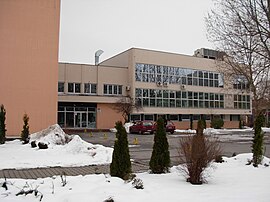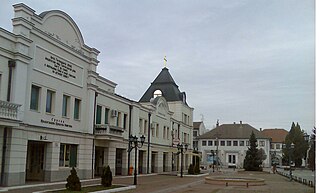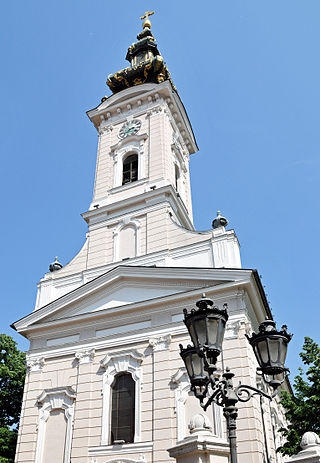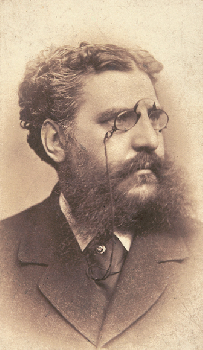Primary schools
Public primary schools

The municipality of Novi Sad has 37 schools (34 regular and 3 special ones) operating as primary schools. As many as 22 schools are located on the territory of the City of Novi Sad. In addition to Novi Sad, primary schools in this municipality are also located in places like: Bukovac, Stepanovićevo, Futog, Budisava, Petrovaradin, Sremska Kamenica, Kovilj, Kisač, Veternik, Rumenka, Begeč, Šangaj and Kać. [1]
City of Novi Sad:
- Branko Radičević primary school, Futoška 5, Novi Sad
- Dositej Obradović primary school, Filipa Filipovića 3, Novi Sad
- Dušan Radović primary school, Čenejska 61, Novi Sad
- Đorđe Natošević primary school, Maksima Gorkog 54, Novi Sad
- Đura Daničić primary school, Dušana Vasiljeva 19, Novi Sad
- Ivan Gundulić primary school, Gundilićeva 9, Novi Sad
- Ivo Lola Ripar primary school, Kraljevića Marka 2a, Novi Sad
- Jovan Popović primary school, Ravanička 2, Novi Sad
- Jožef Atila primary school, Šarplaninska 28, Novi Sad
- Kosta Trifković primary school, Berislava Berića 2, Novi Sad
- Miloš Crnjanski primary school, Anđe Ranković 2, Novi Sad
- Nikola Tesla primary school, Futoška 25a, Novi Sad
- Petefi Šandor primary school, Bore Prodanovića 15a, Novi Sad
- Prva vojvođanska brigada primary school, Seljačkih buna 51a, Novi Sad
- Sonja Marinković primary school, Puškinova 28, Novi Sad
- Svetozar Marković Toza primary school, Janka Čmelika 89, Novi Sad
- Vasa Stajić primary school, Vojvode Knićanina 12b, Novi Sad
- Vuk Karadžić primary school, Radoja Domanovića 24, Novi Sad
- Žarko Zrenjanin primary school, Despot Stefan Boulevard 8, Novi Sad
- Josip Slavenski primary music school, Radnička 19a, Novi Sad
- Milan Petrović primary and secondary school, Braće Ribnika 32, Novi Sad
- Sveti Sava adult primary school, Ognjena Price 7, Novi Sad

Municipality of Novi Sad:
- Aleksa Šantić primary school, Vojvode Putnika 6, Stepanovićevo, Novi Sad
- August 22 primary school, Trg žrtava genocida 1, Bukovac, Novi Sad
- Desanka Maksimović primary school, Carice Milice 1, Futog, Novi Sad
- Đura Jakšić primary school, Kralja Petra I 9, Kać, Novi Sad
- Ivo Andrić primary school, Školska 3, Budisava, Novi Sad
- Jovan Dučić primary school, Preradovićeva 6, Petrovaradin, Novi Sad
- Jovan Jovanović Zmaj primary school, Školska 3, Sremska Kamenica, Novi Sad
- Laza Kostić primary school, Laze Kostića 42, Kovilj, Novi Sad
- Ljudovit Štur primary school, Želežnička 3, Kisač, Novi Sad
- Marija Trandafil primary school, Paunova 14, Veternik, Novi Sad
- Mihajlo Pupin primary school, Kralja Aleksandra 38, Veternik, Novi Sad
- Miroslav Antić primary school, Rade Končara 2, Futog, Novi Sad
- Sveti Sava primary school, Jovana Jovanovića Zmaja 34, Rumenka, Novi Sad
- Veljko Petrović primary school, Kralja Petra I 36, Begeč, Novi Sad
- Veljko Vlahović primary school, Ulica VIII 2, Šangaj, Novi Sad
Private primary schools
There are 4 private primary schools in Novi Sad verified from the Ministry of Education. [2]
- Miroslav Mika Antić private primary school, Novi Sad
- Sveti Kirilo i Metodije private primary school, Novi Sad
- Svitac private primary school, Sremska Kamenica, Novi Sad
- Tvrđava private primary school, Novi Sad



















